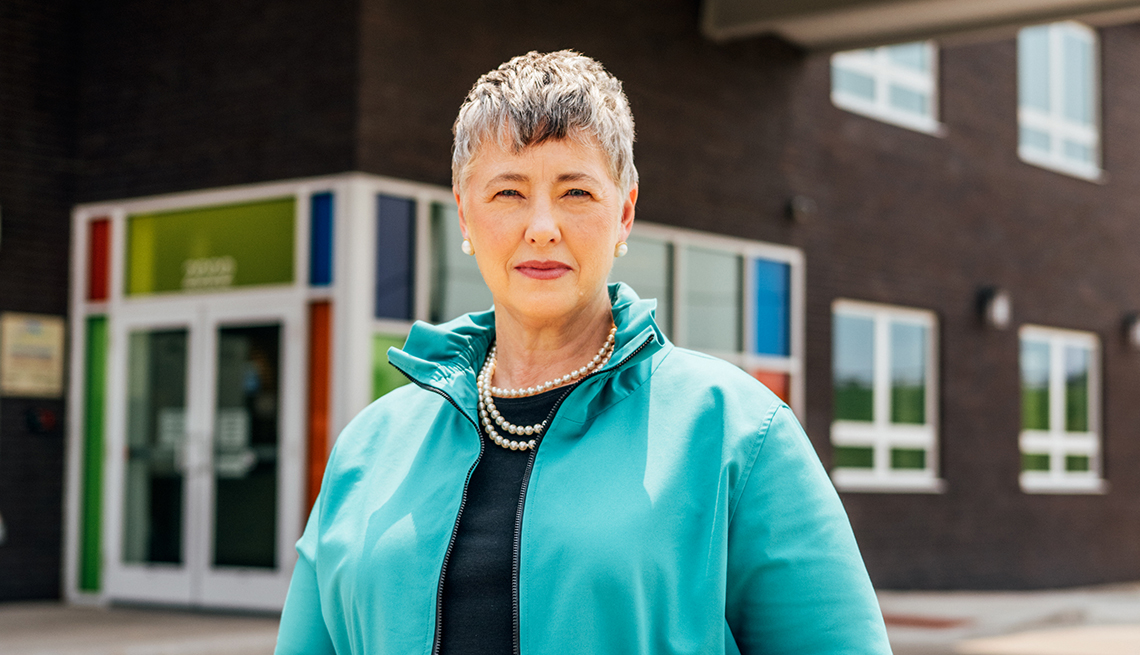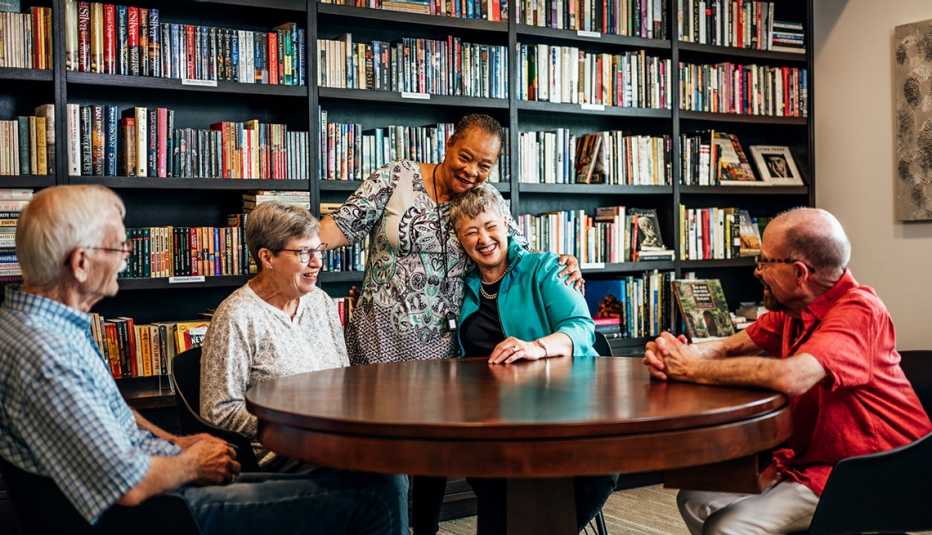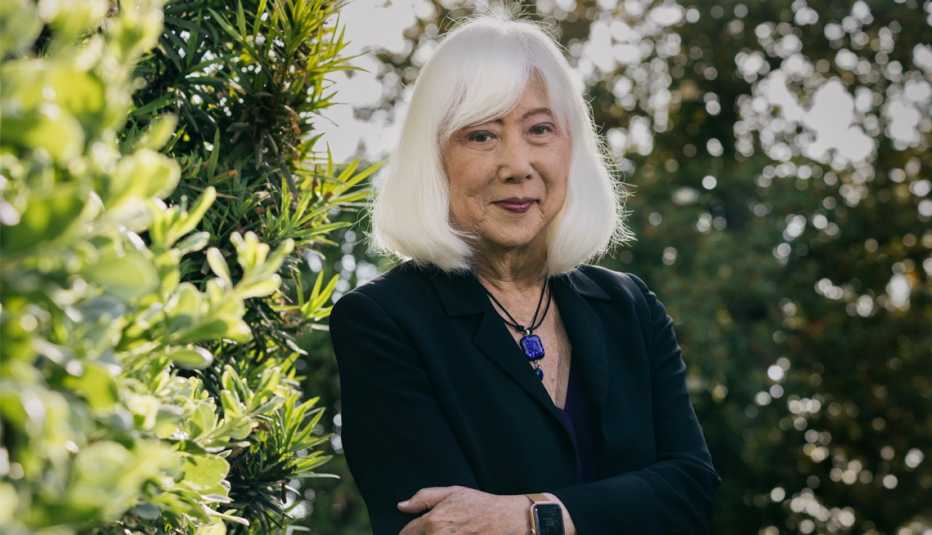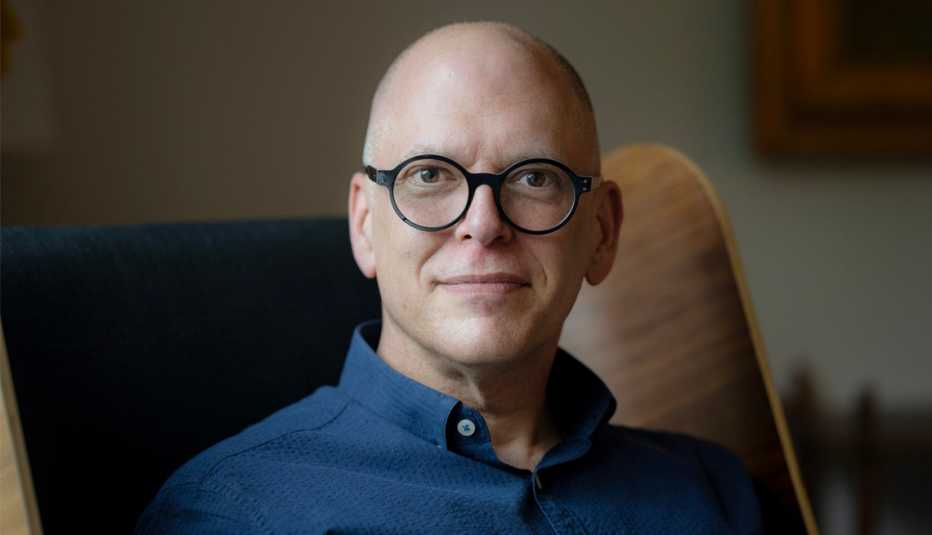Staying Fit
Lourdes Alcaniz,
Annise Parker, 66, served as mayor of Houston from 2010 to 2015 — the first openly LGBTQ mayor of a major American city and the only person in Houston history to have served as a council member, controller and mayor. In 2010, Time magazine named Parker one of the 100 most influential people in the world. Today she is the president and CEO of the Victory Institute, the only national organization dedicated to elevating openly LGBTQ leaders who can promote equality at all levels of government.


AARP Membership— $12 for your first year when you sign up for Automatic Renewal
Get instant access to members-only products and hundreds of discounts, a free second membership, and a subscription to AARP the Magazine.
Parker is married to Kathy Hubbard and together they have four children, three daughters — whom they adopted out of foster care — and a son (now in his 40s) who was homeless when they took him in. He was, according to Parker, a “runaway from grandparents who tried to force the ‘gay’ out of him.”


Trans Activism Moves Ahead
1966: A riot at Compton’s Cafeteria in the Tenderloin District of San Francisco marked the beginning of transgender activism. The riot took place in response to law enforcement harassment of drag queens and trans and gay people who were in the restaurant. It’s one of the first reported instances of transgender people fighting against oppressive actions.
1969: The Stonewall uprising, a struggle between members of the New York City queer community and cops following a raid on the famous bar kicks off the modern LGBTQ+ Liberation Movement.
1970: Sylvia Rivera and Marsha P. Johnson, two transgender sex workers, started Street Transvestite Action Revolutionaries, and then created STAR House, in New York City, which worked to provide housing for street queer and trans youth.
1975: Minneapolis protects transgender people with a nondiscrimination ordinance prohibiting employment discrimination and equal access to public accommodations — the first such law in the country.
1993: Minnesota extends the nondiscrimination law to the entire state.
2005: California bars medical insurance companies from denying transgender people health care with the Insurance Gender Nondiscrimination Act.
2008: Stu Rasmussen, of Silverton, Oregon, is elected the nation’s first openly transgender mayor.
2014: Obama Administration rules that Title VII of the 1964 Civil Rights Act applies to transgender people, affording federal nondiscrimination protections to the transgender community.
The Obama Administration also rules that Medicare must cover gender-confirmation surgeries.
2020: The Bostock v. Clayton County, Georgia, decision by the U.S. Supreme Court affirms that Title VII protects transgender people from being fired from their place of work for transitioning.
2021: Rachel Levine became the first openly transgender person confirmed by the U.S. Senate to a federal post and was sworn in as the assistant secretary of health. The same year, Levine became the first openly transgender four-star officer across the country’s eight uniformed services.
During her time in office, Parker worked to tackle the city’s homelessness problem through initiatives like The Way Home, a collective effort of more than 100 partners to prevent and end homelessness in Houston. On a trip to Los Angeles, Parker witnessed first-hand the challenges facing LGBTQ seniors in need of affordable housing, and as mayor, she used her influence to make a difference. This is her story.
Annise Parker: In 2013, during my second term as mayor of Houston, I took a trip to Los Angeles to visit the U.S. VETS complex for housing homeless veterans and while there also arranged a tour of the Triangle Square complex — the first LGBTQ-affirming affordable senior housing center in the U.S. During the tour, I stopped in at the apartment of a woman whose partner of many years passed away after a long-term illness had depleted their savings. This woman was not alone in her predicament. I was shocked by how many had been thrown into poverty when they lost a life partner, and I was outraged that some struggled to find a welcoming place to live without returning to the closet.
A seed was planted that day. When I returned to Houston, I knew it was within my abilities as mayor to move the needle on this issue. It was an area that I hadn’t thought about in concrete terms before as I was focused on chronic homelessness. But it fit into my passion for housing and helping the most vulnerable. According to the National Resource Center on LGBT Aging, this population is twice as likely in old age to live alone and more likely to confront poverty, homelessness and health challenges. I knew I had to get to work immediately on securing land and funding if I wanted to start creating something in Houston like the Triangle Square complex before my third term as mayor ended in 2015.
As I met with various stakeholders, I learned more about the challenges facing LGBTQ seniors. Many, for instance, have aged in relationships at a time before marriage equality, so when their long-term partners die, they are denied benefits or even locked out of their own homes because they were not given the opportunity to legally marry. Eventually, many LGBTQ seniors need to find a facility where they can live out their remaining years with dignity. Some of these facilities are not friendly to the LGTBQ community, and some reject them outright.








































































